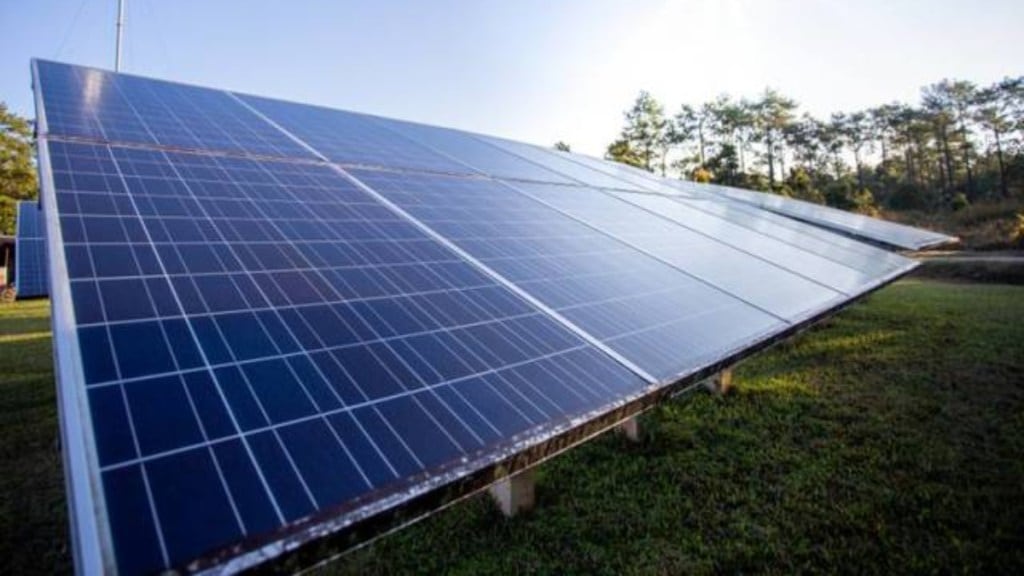The proposed reduction of GST on renewable energy devices and equipment to a uniform 5% from 12% is expected to lower project costs and accelerate the capacity addition needed to meet India’s clean energy targets, according to the industry.
Moreover, a reduced GST may also result in lower tariffs for discoms which may help accelerate the signing of power purchase agreements.
Lower tariffs and improved project viability
As per Icra, the rationalisation of GST rates for solar PV modules and wind turbine generators is expected to reduce the capital cost for solar and wind power projects by ~5%. This is expected to reduce the cost of generation for solar power projects by ~10 paise per unit and for wind power projects by ~15-17 paise per unit.
“This would reduce the capital cost for under-implementation projects and also likely to reflect in upcoming bids. This in turn will benefit the power distribution companies in the form of lower power purchase cost, going forward,” said Girish kumar Kadam, Senior Vice President & Group Head, Icra .
Siddharth Bhatia, MD, Oyster Renewable Energy noted that by making project economics more attractive, these cost savings provide discoms and end users an incentive to sign PPAs and accelerate deployment.
“While the GST cut alone does not fix the root demand challenge, it improves tariff benchmarks and could catalyze faster decision-making on pending contracts, especially where state utilities and corporate buyers are price-sensitive,” Bhatia said. The RE sector is coping with nearly 44 GW of projects awaiting PPAs, delaying capacity deployment.
As per Deloitte, the effective GST incidence on setting up renewable energy plants decreases from 13.8% to 8.9% post new rationalisation, directly lowering capital expenditure for developers. This in turn improves the financial viability and boosts the internal rate of return (IRR) for new renewable energy projects.
Addressing the inverted tax structure challenge
“That said, certain industries, such as bio-gas—where output remains taxable under GST—continue to face challenges like input tax credit accumulation. This issue primarily stems from GST rate inversion on input services used during plant setup and operations, which has yet to be addressed by the GST Council,” said Jimit Devani, Partner, Deloitte India.
Devani also pointed out that the reduction in effective GST rate (by 4.9%) on plant set up costs is likely to translate into lower project costs, which could give developers greater headroom to offer more competitive tariffs to discoms.
In a market where tariff sensitivity is high and several PPAs have been stalled over pricing issues, this cost rationalization may help revive negotiations and facilitate signing of long-pending contracts.
While the immediate impact on tariffs will depend on existing contractual structures and pass-through provisions, the GST cut is a positive signal that could reduce tariff-related frictions and support smoother PPA finalization, Devani said.
JSW Energy said that for its renewables portfolio, lower GST on turbines, solar modules and balance-of-plant equipment will reduce project costs, and improve returns. Importantly, these savings will enable more effective capital deployment towards its ongoing capex programme.
The move significantly lowers the input costs for project development and module manufacturing, thereby enhancing the overall economics of renewable energy projects. Sumant Sinha, Founder and CEO, ReNew said that lower GST rates could help reduce costs in future bids. This will eventually be passed on to end consumers, resulting in lower electricity rates for industrial and retail customers.
While the exact reduction will depend on project specifications and configurations, customers can expect a tangible decrease in module prices, further strengthening the case for solar adoption, said Amit Paithankar, CEO & Whole-time Director, Waaree Energies Limited.
However, the new rate may temporarily increase the issue of inverted taxation, and the industry is confident that the government’s focus on faster Input Tax Credit (ITC) refunds will help address this.
While the reduction does deepen the inverted duty structure, the Council has clarified that refunds will be available and expedited through process reforms. “This ensures that liquidity is not locked up, while the lower rate directly reduces project costs and improves affordability for developers,” said Manoj Mishra, Partner and Tax Controversary Management Leader, Grant Thornton Bharat LLP.
Neerav Nanavaty, CEO, BluPine Energy said this will unlock EPC capex and lower the levelised cost of energy amid volatile input and logistics costs.

